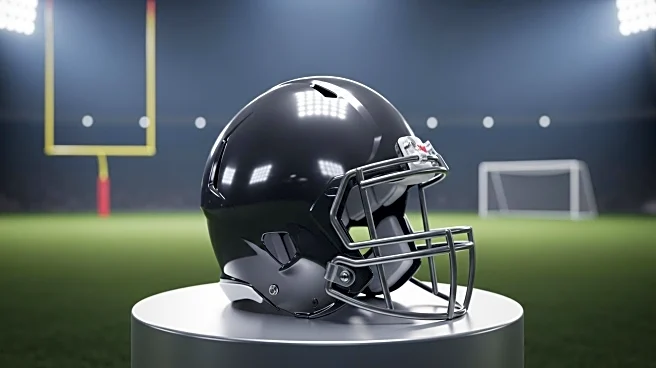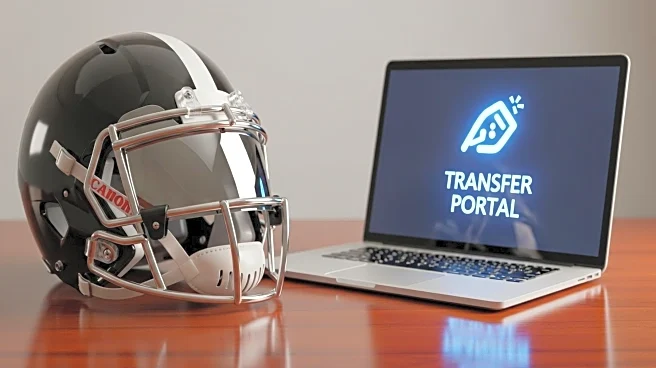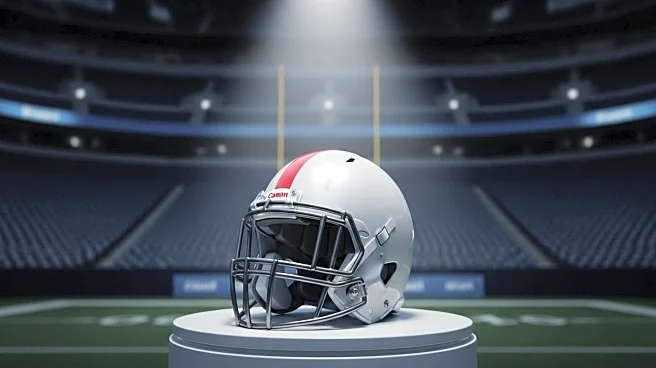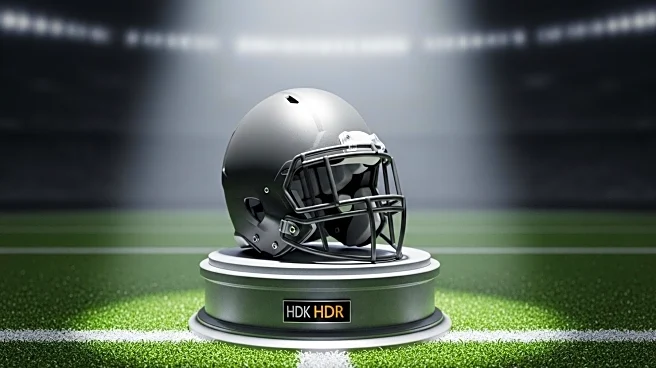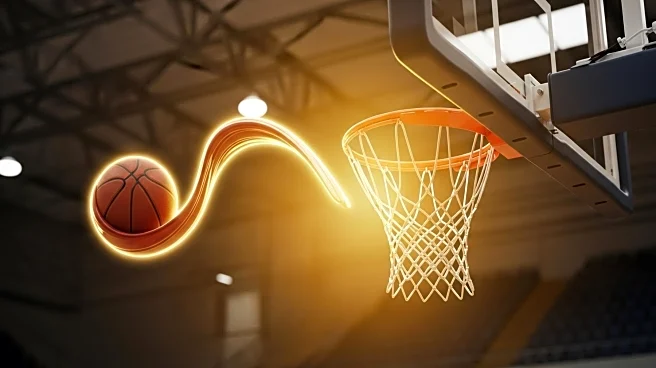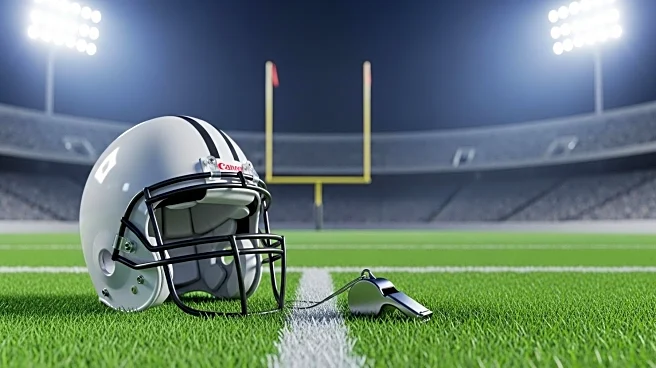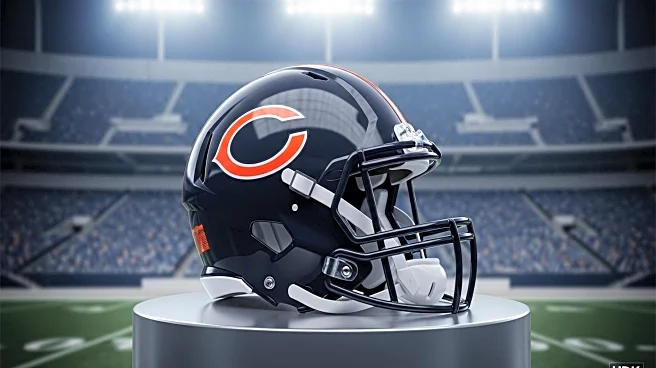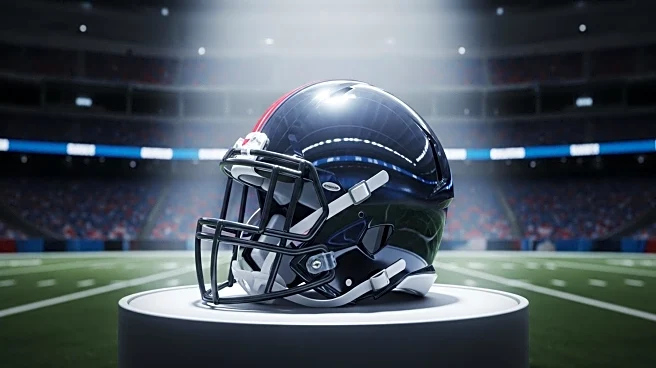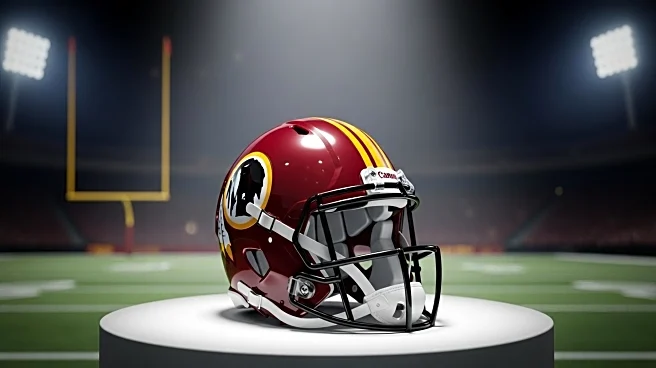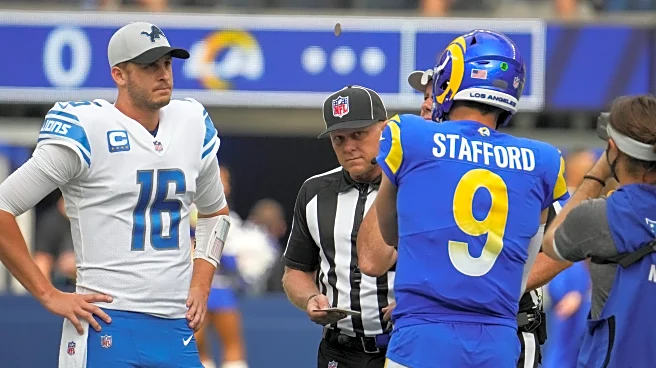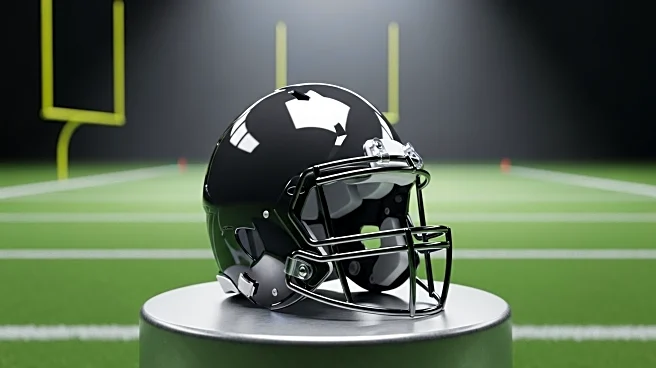What's Happening?
Ja'Kobi Lane, a junior wide receiver at USC, has become a notable figure in college football following a standout performance in Week 2 of the 2025 season. Despite achieving three catches for 91 yards and a touchdown, it was one particular catch that elevated Lane's profile significantly. This performance has sparked discussions about Lane and his teammate Makhi Lemon potentially being the best receiving duo in college football. Despite his rising fame, Lane has yet to have a trading card, a rarity for breakout stars in the sport. Lane's previous season statistics, including an 84.9 PFF grade and leading in contested catches and touchdowns, further solidify his reputation as a top player.
Why It's Important?
The absence of a trading card for Ja'Kobi Lane highlights a unique situation in the sports collectibles market, where standout athletes typically have merchandise available. Lane's growing popularity could influence trading card companies to capitalize on his rising star, potentially impacting the sports memorabilia industry. Additionally, Lane's focus on his athletic development over NIL deals underscores a shift in priorities among college athletes, emphasizing long-term career goals over immediate financial gains. This approach may resonate with other athletes aiming for professional success, influencing college sports culture and the dynamics of athlete endorsements.
What's Next?
As Ja'Kobi Lane continues to perform well, it is likely that trading card companies will recognize the opportunity to create cards featuring him, responding to collector demand. Lane's focus on his development and potential NFL career suggests he will continue to prioritize his performance on the field. This could lead to increased attention from scouts and professional teams, potentially affecting his draft prospects. The ongoing discussions about Lane's abilities may also influence USC's strategies and highlight the importance of nurturing talent within college sports programs.
Beyond the Headlines
Lane's situation raises questions about the commercialization of college athletes and the balance between financial opportunities and athletic development. The lack of a trading card despite his achievements may prompt discussions about how athletes are marketed and the criteria for creating memorabilia. Additionally, Lane's emphasis on career development over NIL deals could inspire a cultural shift among college athletes, prioritizing long-term success over immediate financial gains. This perspective may influence how athletes approach their college careers and the role of endorsements in their development.
